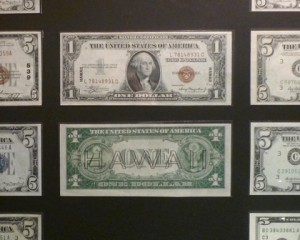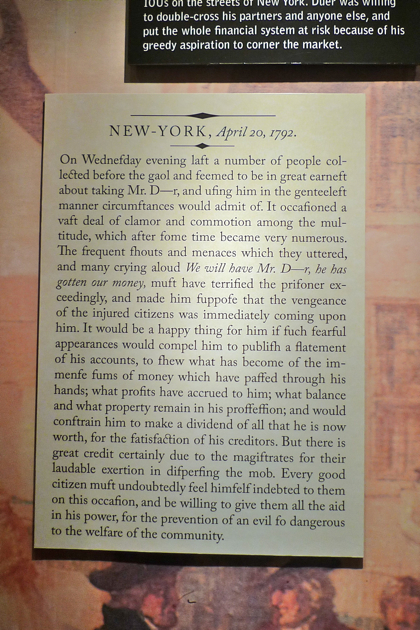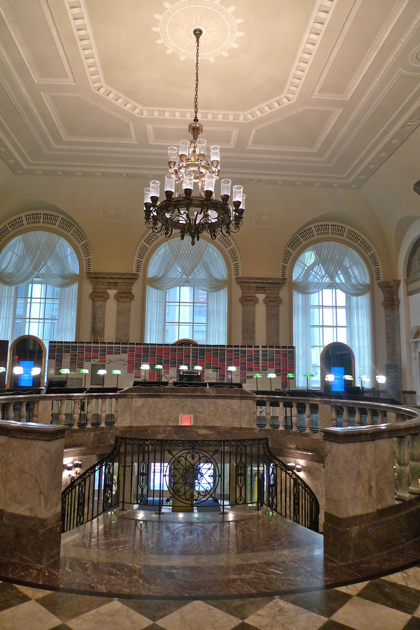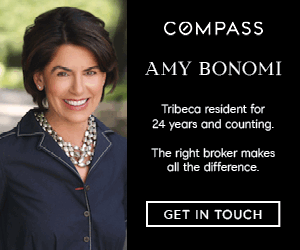Field Trip: MOAF
 My friend Lisa and I have a history of attempting to do interesting afternoon activities, even if they often devolve into simply grabbing a coffee. A few days ago, she said she’d be getting her hair cut at Pepper Pastor in the Seaport, and did I want to meet up afterward? She works at the Met, she pointed out, so she gets free admission to a million museums. I didn’t have time to venture
My friend Lisa and I have a history of attempting to do interesting afternoon activities, even if they often devolve into simply grabbing a coffee. A few days ago, she said she’d be getting her hair cut at Pepper Pastor in the Seaport, and did I want to meet up afterward? She works at the Met, she pointed out, so she gets free admission to a million museums. I didn’t have time to venture AboCa uptown, so I suggested we, well, grab a coffee instead. She countered with a link: moaf.org.
Lisa is a fashion obsessive, so my first thought was Museum of American Fashion, or maybe Museum of Art and Fashion. (And then I pondered variations of MILF….) But no, she was suggesting the Museum of American Finance on Wall Street. I responded with my biggest weapon—that we go get milkshakes instead—but she held firm.
I’ll go anywhere once, and as someone who has been to a lot of places once, trust me when I say that MOAF’s 1796 building is gorgeous. The exhibits inside give an overview of how modern finance has developed over the centuries, and I’m sure that even someone as financially dim as I am could go there and learn a nice little foundation, but Lisa and I wanted to have fun, so we didn’t focus all that hard. Anyway, I like trivia, and there was was plenty of it. So without further ado, here are 10 tidbits I learned at MOAF:
1. As recently as the late 18th century, it was common English usage to substitute an “f” for an “s,” although not in all instances. In an exhibit titled “Scandal!” we were reading about William Duer—who tried to corner the something-or-other market—when we had a giggle fit. Seriously, try reading this—pronouncing every “f”—without laughing. (I love the word “fatisfaction”!)
2. During the Salad Oil Scandal (!) of 1963, Allied Vegetable Oil began “taking loans from major banks using non-existent vegetable oil as collateral.” Which is interesting enough, except what was really great was how the company tricked inspectors: Workers filled vats with water, floated some oil on top, and said it was all oil.
3. The New York Mercantile Exchange is a publicly traded company—and there is (was?) a whole set of established hand signals traders used to communicate.
4. Apparently, there’s an adage that “history doesn’t repeat itself, but it certainly does rhyme.” I had never heard that!
5. A room at the museum is devoted to Alexander Hamilton—who is buried at Trinity Church—so I learned quite a bit about him. Hamilton taught himself law for six months, then passed the New York bar exam. Before his famous duel with Aaron Burr, he confided to a friend that he intended to “throw away his shot.” When he died, he left his wife and children in “severe debt.”
 6. During World War II, the federal government printed money with “HAWAII” stamped across it—that way, if Japan captured the islands, the money could be declared useless.
6. During World War II, the federal government printed money with “HAWAII” stamped across it—that way, if Japan captured the islands, the money could be declared useless.
7. In the Great Depression, some cities and municipalities printed their own money.
8. The founding of the Secret Service (to root out counterfeiting) was Abraham Lincoln’s final act as president: He did it on the same day he was assassinated.
9. Using foreign currency was banned in the U.S. in 1857.
10. L. Frank Baum’s The Wizard of Oz is a commentary on 1890s economics, particularly the debate about using gold or silver to back the currency. And “Oz” is so-named because it’s the abbreviation for “ounces.”
Finally, I learned that the vegetarian dumplings from Rickshaw Dumpling truck (often parked in FiDi) are legitimately good, and not just good for vegetarian dumplings. Anyway, here’s one more photo of MOAF:















